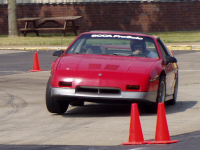A Haas MiniMill like Configuration
- webmanoffesto
- Offline
- New Member
-

Less
More
- Posts: 7
- Thank you received: 0
20 May 2016 14:13 #74879
by webmanoffesto
A Haas MiniMill like Configuration was created by webmanoffesto
I'm in a CNC training program and we're learning on Haas MiniMills. I'm using LinuxCNC because I'm a Linux user and I want an alternative to MasterCam.
LinuxCNC gives me a "select a machine configuration" message. Can you recommend a "Haas-like" machine to use?
LinuxCNC gives me a "select a machine configuration" message. Can you recommend a "Haas-like" machine to use?
Please Log in or Create an account to join the conversation.
- Todd Zuercher
-

- Offline
- Platinum Member
-

Less
More
- Posts: 4690
- Thank you received: 1434
20 May 2016 15:49 - 20 May 2016 15:50 #74889
by Todd Zuercher
Replied by Todd Zuercher on topic A Haas MiniMill like Configuration
Linuxcnc isn't a cam program. It is a machine controller.
The work flow is like this:
CAD program creates a drawing => CAM program (MasterCAM) creates G-code (tool paths) to make a part from that drawing => Machine controller (Linuxcnc) reads the G-code, and commands the hardware to move => machine the makes part.
So unless you are intending to retrofit the control on your schools Haas MiniMill to Linuxcnc. I'm not sure how much good it is going to do for you.
The work flow is like this:
CAD program creates a drawing => CAM program (MasterCAM) creates G-code (tool paths) to make a part from that drawing => Machine controller (Linuxcnc) reads the G-code, and commands the hardware to move => machine the makes part.
So unless you are intending to retrofit the control on your schools Haas MiniMill to Linuxcnc. I'm not sure how much good it is going to do for you.
Last edit: 20 May 2016 15:50 by Todd Zuercher.
Please Log in or Create an account to join the conversation.
- webmanoffesto
- Offline
- New Member
-

Less
More
- Posts: 7
- Thank you received: 0
20 May 2016 20:45 #74895
by webmanoffesto
Replied by webmanoffesto on topic A Haas MiniMill like Configuration
I'm learning CNC. I'm writing some G-code, and I want to see if it works. I want to debug the code when it doesn't work.
1. Is that correct? It seems to be because it gave me an error message ("Near line 6" ... "G code out of range" ).
2. Is there a better free simulator I can run on Linux?
Our teacher gave us this link, but it's not great nraynaud.github.io/webgcode/.
3. What would be the best way to debug my G-code? (Seeing what the code does in a simulator would help.)
To me that says that LinuxCNC can open the G-code I write and tell me if it works.Machine controller (Linuxcnc) reads the G-code, and commands the hardware to move => machine the makes part.
1. Is that correct? It seems to be because it gave me an error message ("Near line 6" ... "G code out of range" ).
2. Is there a better free simulator I can run on Linux?
Our teacher gave us this link, but it's not great nraynaud.github.io/webgcode/.
3. What would be the best way to debug my G-code? (Seeing what the code does in a simulator would help.)
Please Log in or Create an account to join the conversation.
- Todd Zuercher
-

- Offline
- Platinum Member
-

Less
More
- Posts: 4690
- Thank you received: 1434
20 May 2016 21:29 #74897
by Todd Zuercher
Replied by Todd Zuercher on topic A Haas MiniMill like Configuration
G-code is often very machine specific. To the extent that most often code made for one type will not run properly on another. Sometimes even almost identical machines from the same manufacturer, using the same brand (but slightly different model) of controller won't use g-code that is fully compatible with each other. I have a few perfect examples of this in my shop, code for one machine will run on the other, but not the other way around. This is further obfuscated by manufacturers offering optional features and canned cycles that you have to pay extra for when buying the machine.
If you just want to check what your code might look like, download a g-code backplot program. Here is a link to one that is geared more towards g-code made for Linuxcnc.
camotics.org/
If you just want to check what your code might look like, download a g-code backplot program. Here is a link to one that is geared more towards g-code made for Linuxcnc.
camotics.org/
Please Log in or Create an account to join the conversation.
- Sparky961
-

- Offline
- Elite Member
-

Less
More
- Posts: 210
- Thank you received: 15
20 May 2016 22:30 #74898
by Sparky961
Replied by Sparky961 on topic A Haas MiniMill like Configuration
Take this with a grain of salt, but coming from someone who professionally programs and runs a CNC machine daily, the ability to write g-code from scratch in a commercial setting is not of much value. It is far too slow and machines and parts are too complex to avoid the inevitable human error factor. However, being able to intelligently modify g-code that comes from a CAM program is in my opinion an essential skill that many machinists lack. Also, memorizing a subset of the g-code for a particular machine and running certain MDI commands can greatly improve your efficiency and connection with a machine.
Sometimes you can do some pretty nifty things that increase productivity and impress your employer, and to have done so through the CAM program would have been too slow or downright impossible.
Regarding your original question, I have a preference for NCPlot . I think there was a free/demo version offered a number of years back but it seems to just be a short trial now. Worth a few bucks if the current version is anything like what I've been using.
If you really want to understand g-code, try writing your own interpreter. That's just about enough to drive you nuts.
Sometimes you can do some pretty nifty things that increase productivity and impress your employer, and to have done so through the CAM program would have been too slow or downright impossible.
Regarding your original question, I have a preference for NCPlot . I think there was a free/demo version offered a number of years back but it seems to just be a short trial now. Worth a few bucks if the current version is anything like what I've been using.
If you really want to understand g-code, try writing your own interpreter. That's just about enough to drive you nuts.
Please Log in or Create an account to join the conversation.
- Todd Zuercher
-

- Offline
- Platinum Member
-

Less
More
- Posts: 4690
- Thank you received: 1434
20 May 2016 23:26 - 20 May 2016 23:27 #74900
by Todd Zuercher
Replied by Todd Zuercher on topic A Haas MiniMill like Configuration
I agree. But where hand written code really shines is in the use of parametric code. (Try generating that with a CAM program) However most parametric g-code files, will confuse the heck out of most backplot programs I've played with. (even the ones running the displays on the machine control.)
While computer-generated code is where the vast majority of code is and will be generated. I can see the value of writing g-code from scratch in a teaching environment as being a very good way to learn how to read, use, and diagnose code problems.
While computer-generated code is where the vast majority of code is and will be generated. I can see the value of writing g-code from scratch in a teaching environment as being a very good way to learn how to read, use, and diagnose code problems.
Last edit: 20 May 2016 23:27 by Todd Zuercher.
Please Log in or Create an account to join the conversation.
- webmanoffesto
- Offline
- New Member
-

Less
More
- Posts: 7
- Thank you received: 0
21 May 2016 00:42 #74901
by webmanoffesto
Yes, that is exactly what I want to do.
Replied by webmanoffesto on topic A Haas MiniMill like Configuration
However, being able to intelligently modify g-code that comes from a CAM program is in my opinion an essential skill that many machinists lack. Also, memorizing a subset of the g-code for a particular machine and running certain MDI commands can greatly improve your efficiency and connection with a machine.
Yes, that is exactly what I want to do.
Please Log in or Create an account to join the conversation.
- FDP
- Offline
- Junior Member
-

Less
More
- Posts: 30
- Thank you received: 1
13 Dec 2016 01:16 #84009
by FDP
Replied by FDP on topic A Haas MiniMill like Configuration
Can you elaborate on what kinds of tweaks you do regularly on a machine that can't be done in CAM? I am still getting my feet wet with CNC (5 years in I am no longer ashamed of my skills, but not a master yet). The only thing I regularly do is change G83 to G73 in order to fix peck milling and tweak the parameters. I can speak Gcode pretty well, but have never had to use work offsets on the tiny machines I have mostly used in the past, so am still getting used to those.
Please Log in or Create an account to join the conversation.
- Todd Zuercher
-

- Offline
- Platinum Member
-

Less
More
- Posts: 4690
- Thank you received: 1434
13 Dec 2016 13:22 #84027
by Todd Zuercher
Replied by Todd Zuercher on topic A Haas MiniMill like Configuration
It depends a lot on the code. I'm sure that the most common adjustment is a depth adjustment, which can usually be a very simple find and replace change with most 2.5-D code. If the code is optimized for using tool diameter offsets, minor changes in part size can be made there. But with parametric coding, the effect of minor changes can be very significant, and only limited by your coding skill and imagination.
The following user(s) said Thank You: FDP
Please Log in or Create an account to join the conversation.
- FDP
- Offline
- Junior Member
-

Less
More
- Posts: 30
- Thank you received: 1
14 Dec 2016 03:57 #84071
by FDP
Replied by FDP on topic A Haas MiniMill like Configuration
Thanks for explaining! I really haven't used parametric coding at all - it's quite interesting. Most of the work I do has complex geometry but is still 2.5D, so it would have been very useful in the past to allow for certain things to be more easily adjustable in machine.
Please Log in or Create an account to join the conversation.
Moderators: piasdom
Time to create page: 0.083 seconds
